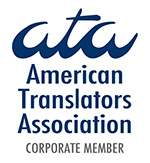There are 7.5 billion people in the world and just under half of them are online. But the vast majority of those internet users are not browsing in their native language. That’s because English is the lingua franca of the internet, the language in which more than 50% of all websites are written. It’s not a huge surprise, given the origins of the internet and English’s dominance as the international language of business.
Yet while non-native English speakers might be proficient enough in the language to understand an English website, comprehension doesn’t guarantee confidence. Consuming content in your mother tongue gives you a greater sense of ease and security, and that can translate into sales. Research by the Common Sense Advisory shows that 72% of consumers are more likely to buy a product if the information is in their native language; in fact 56% actually said that the language was more important to them than the price. In other words, consumers were willing to pay more for something as long as they could read about it in their preferred language.
Given that only 5% of the global population are native English speakers, it seems like a no-brainer that you should be translating your digital content into languages other than English. But which ones? According to a Common Sense Advisory report, you can address 90% of internet users with these 14 languages: English, Simplified Chinese, Traditional Chinese, Spanish, German, Japanese, French, Portuguese, Russian, Korean, Italian, Dutch and Swedish.
Does that mean you’re shooting yourself in the foot unless you translate your website into Dutch and Swedish? Not necessarily (unless you’re expanding to those particular countries). Just three of those languages—English, Simplified Chinese and German—would allow you to speak to 50% of all online users in their native tongue. That’s a lot of reach for a relatively small amount of translation.
To understand the value of localized content, look at Israeli underwear e-tailer Under.me. According to Internet Retailer, the company launched in Israel with both English and Hebrew versions of its website. They noticed that Israeli shoppers viewing the site in Hebrew were three times more likely to buy underwear than those viewing it in English. Since most of their customers were based in Europe, they decided to localize their content by creating French and German-language sites. In France their conversion rate went from 0.67% to 1% and in Germany it jumped from 1% to 2%. It turns out that everybody needs underwear, you just have to speak their language.
By Sarah Theebom




Leave A Comment